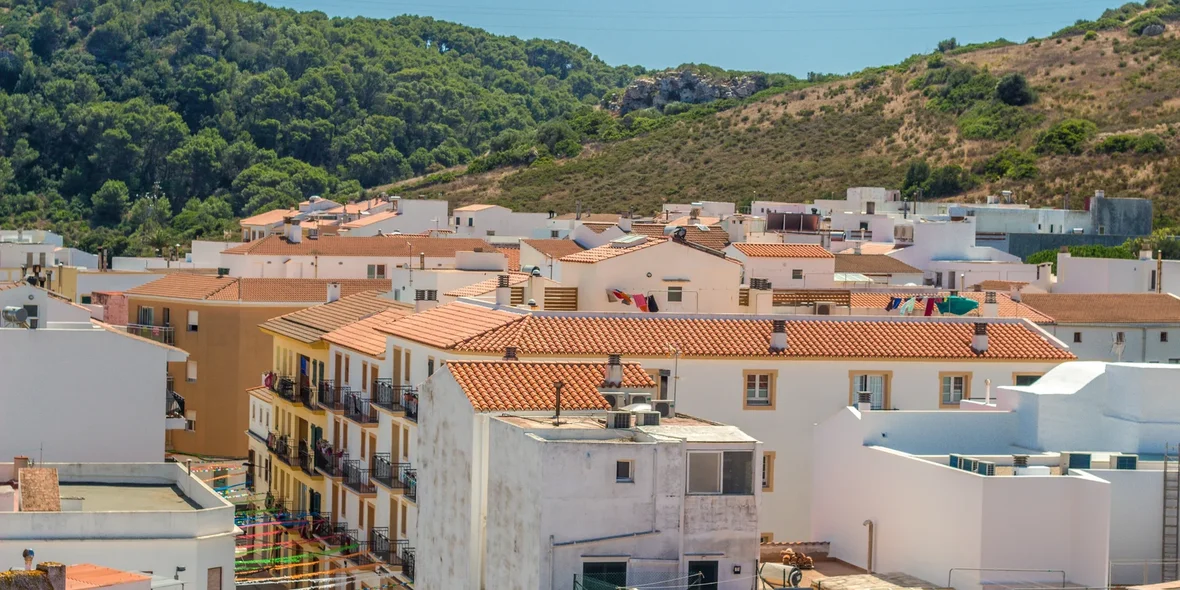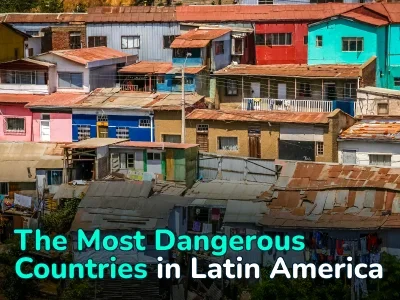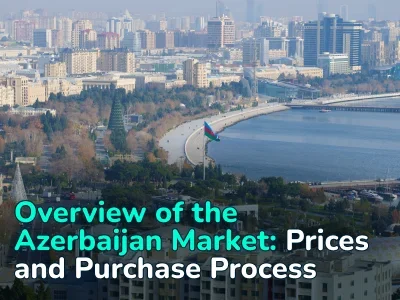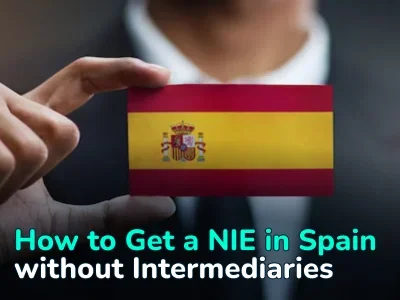
How to Get a Mortgage in Spain: Conditions for Residents and Non-Residents
Spain remains one of the most sought-after real estate jurisdictions in Europe. In 2025, this trend continues: foreigners are still actively purchasing property along the coasts of Costa del Sol, Costa Blanca, and the Balearic Islands.
However, rising popularity comes with increasing prices. According to data from the Instituto Nacional de Estadística (INE), in the second quarter of 2025, the overall Housing Price Index (IPV) in Spain rose by 12.7%, reaching €2517 per m². This raises the investment threshold for entering the Spanish real estate market, prompting investors to rely more often on mortgage financing.
For Spanish residents, mortgage conditions remain relatively favorable, typically covering up to 80% of the property’s value. However, for non-residents, lending requirements are notably stricter. In this guide, we’ll analyze the current state of the Spanish mortgage market in 2025, highlight the key differences between resident and non-resident mortgages, and review what local banks are offering.
Overview of the Spanish Mortgage Market in 2025
After adopting the euro and abandoning its national currency, Spain no longer maintains an independent monetary policy. Consequently, mortgage rates in Spain are directly tied to the Euribor index — the rate at which European banks lend to one another. Euribor, recalculated daily, serves as the primary benchmark for mortgage interest rates across Spain. Understanding it is essential, since it determines the three main types of mortgage structures:
- Fixed-rate mortgages. The interest rate remains unchanged throughout the loan term. Borrowers know their exact monthly payments in advance, which protects them from Euribor fluctuations. However, fixed-rate loans usually have slightly higher interest rates compared to other types.
- Variable-rate mortgages. These loans are directly linked to Euribor. When the Euribor rate decreases, the mortgage rate also drops; conversely, when it rises, monthly payments increase. Euribor fluctuations can reach up to 3 percentage points in different years, leading to effective mortgage rates ranging from approximately 2.2% to 6%.
- Mixed-rate mortgages. This type combines both fixed and variable elements. Typically, the rate remains fixed for the first 5–10 years (around 2.8–3.0%), and then switches to a variable rate tied to Euribor.
According to INE data, as of June 2025, the current mortgage rates in Spain stood at 2.99% per annum with an average loan term of 25 years.
- For fixed-rate mortgages, the average rate was 2.98%.
- For variable-rate mortgages, 3.00%.
Most borrowers prefer fixed-rate loans, which account for roughly 70% of all mortgage agreements in Spain. For residents, banks typically offer rates between 2.5% and 3.9%. For non-residents, rates range from 2.9% to 4.9%.
The highest mortgage activity is observed in Madrid, Catalonia, and Andalusia — regions with a strong concentration of foreign buyers. The average mortgage amount nationwide ranges from €145,000 to €170,000, which usually corresponds to 70–75% of the market value of a standard 80–90 m² apartment.
Mortgage for Residents of Spain
Under Spanish banking and tax law, a resident is defined as an individual who either resides in Spain for at least 183 days per year or has the primary center of economic interests in the country (such as employment, business ownership, or tax registration).
To obtain a mortgage for Spanish property, a resident must possess an NIE (Número de Identificación de Extranjero) and be registered at their place of residence (empadronamiento). In addition, the monthly mortgage payment may not exceed 40% of the household’s net income.
Key parameters of mortgages in Spain for residents (2025):
|
Parameter |
Average Value |
|
Fixed interest rate |
2.6%–3.2% per annum |
|
Variable interest rate |
Euribor + 0.6%–1.2% |
|
Maximum loan term |
Up to 30 years |
|
Financing amount (LTV) |
Up to 80% of the property value |
|
Minimum down payment |
Around 20% |
|
Loan origination fee |
0% – 0.5% |
|
Life and property insurance |
Mandatory; may affect the interest rate |
|
Early repayment fee |
0.15%–0.25% (for fixed-rate loans) |
Required documentation:
- Passport or ID (DNI/NIE).
- Certificate of residence registration (certificado de empadronamiento).
- Proof of income:
- For employees — nóminas (salary slips) for the last 6 months and the annual IRPF tax declaration.
- For self-employed (autónomos) — IRPF and IVA declarations for the last 2–3 years.
- Bank statements for the last 6–12 months.
- Preliminary purchase agreement (contrato de arras).
Banks evaluate applicants based on income stability, credit history, and current debt load. For EU citizens, the approval process usually takes 3–5 weeks. For non-EU permanent residents, around 4–6 weeks.
Mortgage offers from major Spanish banks (2025):
- CaixaBank. Fixed rate from 2.65%, LTV up to 80%, term up to 30 years.
- Santander. 2.55% for the first 6 months, then 3.55%, no origination fees.
- BBVA. Mixed mortgage: fixed at 2.75% for the first 10 years, then Euribor + 0.6%.
- Banco Sabadell. «Hipoteca Online» program with remote approval and signing, rates from 2.85%.
Mortgage in Spain for Non-Residents
In Spain, the category of non-residents (no residentes) includes individuals who live in the country less than 183 days per year, do not hold tax residency, and derive most of their income outside Spain. While non-residents are eligible to apply for a Spanish mortgage under similar principles as residents, they face stricter lending criteria and higher interest rates.
Key parameters for mortgages in Spain for foreigners (2025):
|
Parameter |
Average Value (2025) |
|
Fixed interest rate |
3.2%–4.5% per annum |
|
Variable interest rate |
Euribor + 1.0%–1.8% |
|
Maximum financing (LTV) |
Up to 60–70% of property value |
|
Minimum down payment |
30–40% |
|
Loan term |
Up to 20–25 years |
|
Origination fee |
0.25%–1% |
|
Approval time |
4–8 weeks |
Compared to residents, foreign borrowers are offered lower LTV ratios, higher interest rates and undergo more complex income verification. This is due to stricter compliance procedures for assessing income sources and cross-border transfers.
Popular banks offering mortgages for foreign buyers in Spain (2025):
- Banco Sabadell — up to 70% LTV, rates from 3.4%, remote processing via Sabadell International.
- CaixaBank International — flexible programs for EU and UK citizens, rates from 3.2%, terms up to 25 years.
- Bankinter — designed for foreign investors and holiday home buyers, rates from 3.6%, LTV up to 65%.
- BBVA International Clients — simplified approval for borrowers with assets within the Eurozone.
- Banca March — tailored mortgage solutions for premium clients, fixed rates from 3.0%, terms up to 20 years.
Required documentation for non-residents:
- Passport and NIE (Número de Identificación de Extranjero).
- Proof of income:
- For employees — income certificates and tax returns for the last 2 years.
- For business owners — balance sheets, tax filings, and bank statements.
- Bank statements for the last 6–12 months.
- Preliminary purchase contract (contrato de arras).
- Proof of origin of the down payment (for compliance verification).
- Sworn translations into Spanish with apostille certification.
Spanish banks may request additional documentation confirming the stability of income and will verify whether the borrower’s country of origin is subject to EU financial restrictions.
Following the 2022 geopolitical developments, Spanish banks have tightened due diligence for applicants from CIS countries, especially regarding income traceability and fund transfers.
Key features:
- Mortgages for non-residents are mainly available through CaixaBank, Bankinter, and several international mortgage brokers operating under EU financial supervision.
- The maximum LTV typically ranges between 60–65%, with average mortgage interest rates in Spain from 3.8% to 4.9%.
- Applicants must prove that their income is generated outside Russia or through an EU-registered company.
- All money transfers must be executed through banks not under SWIFT sanctions.
- Each transaction undergoes enhanced source-of-funds verification. Transfers from Russian accounts require a source of funds statement and official bank confirmation of transaction transparency.
Step-by-Step Mortgage Process in Spain
To get a mortgage for a property in Spain, you must first obtain pre-approval (preaprobación hipotecaria) from one or more local banks. For this, you submit a basic document pack (passport, NIE, income proofs, and bank statements). The bank then assesses your creditworthiness and compliance with the required LTV (loan-to-value) ratio.
As a result, the bank issues a pre-approval letter stating the maximum amount you can borrow. With this in hand, you can sign the preliminary purchase agreement (contrato de arras) and lock in the purchase price.
After selecting the property and signing the preliminary agreement, the borrower submits the full documentation to the bank:
- Passport and NIE (Número de Identificación de Extranjero).
- Income certificates and IRPF/IVA tax returns (for the self-employed — 2–3 years of filings).
- Bank statements for the last 6–12 months.
- Preliminary purchase agreement (contrato de arras).
- Property documents: nota simple, tasación (valuation), and cadastre extract.
Based on these, the bank conducts an in-depth review of your financial position, income sources, and credit history. For foreign borrowers, notarized copies of tax returns and an apostille on financial statements are mandatory.
If everything is in order, the bank appoints an accredited surveyor (tasador) to determine the property’s market value. The maximum loan amount is calculated from this valuation report. Valuation fees are typically borne by the client and range from €250—600.
Once all data are in, the bank makes a final decision. The client receives the offer (FIPER) with the definitive terms about the mortgage to buy property in Spain: loan amount, interest rate, term, repayment schedule, fees, and mandatory insurance. If acceptable, the borrower signs the mortgage deed (escritura de préstamo hipotecario) before a notary.
After signing, the notary forwards the documents to the Registro de la Propiedad (Land Registry), where the mortgage is officially registered. The buyer receives the original escritura pública and the keys — at that point, the property legally becomes their asset and the mortgage takes effect.
Additional Costs When Purchasing Property with a Mortgage in Spain
Obtaining a mortgage in Spain involves not only a down payment but also a range of ancillary expenses. In total, these additional costs typically amount to 10–12% of the property’s purchase price.
Main expense categories:
|
Type of Expense |
Average Range (€) |
Comment |
|
Stamp Duty (AJD — Impuesto de Actos Jurídicos Documentados) |
0.5–1.5% of the loan amount (depending on region) |
Paid by the bank, not the borrower |
|
Notary fees (Notaría) |
300–800 |
Payment for notarial services |
|
Land Registry (Registro de la Propiedad) |
250–400 |
Official registration of property ownership |
|
Gestoría (administrative agency) |
250–400 |
Agent handling documentation, tax filings, and registration |
|
Property valuation (Tasación oficial) |
250–600 |
Mandatory for all mortgages; paid by the client |
|
Home insurance (Seguro del hogar) |
0.2–0.5% of loan value |
Required by Spanish law to secure the collateral |
|
Life insurance (Seguro de vida) |
Depends on age and loan amount |
Required by most banks as an additional safeguard |
|
Document translations and notarisation |
100–300 |
Applies to foreign clients — covers translations of tax returns, statements, and contracts |
Mortgage Refinancing in Spain
Mortgage refinancing (remortgage in Spain) refers to replacing an existing property loan in Spain with a new one under more favorable conditions — for example, a lower interest rate, an extended repayment term, or a change in the type of rate (such as switching from variable to fixed).
This mechanism has gained renewed relevance after the sharp rise of the Euribor index in 2022–2023, when it exceeded 4%. By 2025, the Euribor had declined to around 2.4%, motivating many borrowers who took out loans during the peak years to renegotiate their terms. Approximately 45% of all refinanced mortgages now involve switching from variable-rate to fixed-rate products.
Main methods of mortgage refinancing in Spain:
- Subrogación (switching bank or loan terms). This is the most common refinancing method. It involves transferring the current mortgage to another bank offering better conditions. Frequently, the new lender covers part of the administrative or registration expenses associated with signing the new agreement.
- Novación (renegotiation with the same bank). The borrower renegotiates the terms directly with the existing bank, without changing the lender. This is typically simpler and less costly, as it does not require re-registering the mortgage in the Land Registry.
- Debt consolidation (Reunificación de deudas). Used less frequently, this option combines a mortgage with other loans (car, consumer, or personal credit) into a single loan with a lower rate. It can improve monthly cash flow but often extends the total repayment term and may increase the overall interest paid.
Foreign property owners in Spain can also apply for refinancing; however, the process requires resubmitting income documentation from their country of residence, providing full details of the existing mortgage, and undergoing a new property valuation (tasación).
Commercial Mortgage in Spain (Hipoteca Comercial Spain)
Buying real estate in Spain can also be financed through a commercial mortgage. Unlike standard residential loans (hipotecas residenciales), these credits belong to the hipotecas comerciales category and are not covered by Law 5/2019, which protects retail borrowers. Such loans can be issued not only to legal entities but also to individuals acquiring a property for rental or investment purposes.
Parameters of commercial mortgage in Spain in 2025:
|
Parameter |
Typical Values |
|
Interest rate (fixed) |
3.8% – 5.0% |
|
Interest rate (variable) |
Euribor + 1.5–2.2% |
|
Financing amount (LTV) |
Up to 50–65% of the appraised value |
|
Loan term |
10–20 years |
|
Minimum loan amount |
From €200,000 |
|
Business income requirement |
EBITDA > 1.2× annual loan payment |
|
Collateral |
Mortgage on the commercial property; in some cases, personal guarantees from owners |
Banks offering commercial mortgages in Spain:
- Banco Sabadell Empresas (Hipoteca Pyme Inversión) — up to 65% LTV, rates from 3.9%, term up to 20 years.
- BBVA Empresas (Crédito Hipotecario Negocios) — for small and medium enterprises, fixed rate from 4.1%.
- CaixaBank Negocios (Hipoteca Local Comercial) — for the purchase of offices and retail premises, rate from 3.8%.
- Bankinter Empresas (Financiación Inmobiliaria) — financing for aparthotels and income-generating properties.
- Banco Santander Empresas (Hipoteca Comercial Flexible) — financing available for property renovation and improvement projects.
Banks require a professional assessment of the property’s commercial potential, taking into account rental yield, occupancy rate, and location. For buy-to-let investments, the projected income and Debt Service Coverage Ratio (DSCR ≥ 1.25) are key factors.
Required documents:
- Company incorporation documents (Escritura de constitución, CIF).
- Financial statements (balance sheet and profit and loss account for the last 2–3 years).
- Tax declarations (IVA, Impuesto de Sociedades).
- Company bank statements.
- Property valuation report (tasación oficial).
- Preliminary purchase agreement (contrato de arras).
- For private investors — proof of income, NIE, tax declaration from the country of residence, and property income report.
Banks such as Banca March and Bankinter International also provide commercial mortgage solutions to foreign companies investing in Spanish commercial real estate, particularly in the tourism and hospitality sectors.
Investment and Second-Home Mortgages in Spain
A mortgage for a holiday home in Spain or for rental income is among the most popular investment strategies in the country. In 2024, approximately 22% of all mortgage transactions were investment-based, and by 2025, this share increased to 25%, reflecting growing foreign interest in Spain’s residential investment sector.
For banks, such loans are classified as «segunda vivienda» — mortgages for second homes. While they follow the same general structure as standard residential loans, their conditions are slightly stricter due to the higher investment risk profile.
Typical mortgage conditions for second homes (2025):
|
Parameter |
Average Value |
|
Fixed interest rate |
3.0%–3.9% per annum |
|
Variable interest rate |
Euribor + 0.9%–1.3% |
|
Maximum LTV |
Up to 70% |
|
Minimum down payment |
30% of property value |
|
Loan term |
Up to 25 years |
|
Home insurance |
Mandatory |
|
Eligible borrower |
Resident or non-resident from the EU / UK / Latin America |
Banks categorize investment or second-home mortgages as higher-risk products because they are not linked to the borrower’s primary residence. As a result:
- The average mortgage rate in Spain is typically 0.3–0.6 percentage points higher than those on primary-residence mortgages.
- LTV ratios are lower, and down payment requirements are stricter.
- Borrowers must demonstrate legal rental income reporting in Spain to comply with tax regulations (Declaración de ingresos por arrendamiento).
Investment-focused buyers often use these mortgages to purchase properties in tourist-driven regions such as Costa del Sol, Costa Blanca, the Canary Islands, and the Balearics, where gross rental yields range from 4% to 7%, depending on property type and location.
Frequently Asked Questions About Mortgages in Spain
Can a foreigner buy property in Spain with a mortgage?
Nonresident citizens have full legal rights to getting a mortgage in Spain as foreigners. Spanish legislation does not impose restrictions based on nationality. The key requirements are possession of a foreign identification number (NIE) and a verifiable source of income.
Spanish banks actively lend to citizens of the EU, the United Kingdom, the United States, Canada, Latin American countries, and the Middle East. The application process for foreigners is largely standardized, with additional compliance checks for income verification and fund transfers.
What are the Spanish mortgage rates for non residents?
For non-residents in Spain in 2025, mortgage rates are typically ~2.6–3.8% fixed or 12-month Euribor + 1.0–2.0 pp for variable deals. With 12-month Euribor around ~2.18% (Oct 2025), that implies effective variable rates of ~3.2–4.2%. Standard terms are 20–25 years, with a maximum LTV of 60–70%, meaning buyers should plan to put down 30–40% of the property price in cash.
Banks such as Banco Sabadell and Santander publicly quote fixed products from ≈2.5–3.3% APRC and mixed/variable options around Euribor +1.05% to +1.65%, usually contingent on bundled products (salary direct debit, home & life insurance).
Are there any alternatives for getting a mortgage for Spanish property?
There are several alternatives to a traditional mortgage if a buyer wants to purchase property in Spain using credit but without a classic mortgage lien.
- A personal loan (Préstamo personal). This option does not require real estate collateral. The maximum amount is usually between €60,000 and €100,000. The interest rate is higher — from 5% to 8%, with a repayment term of up to 10 years. It is suitable for partial financing, for example, to cover a missing portion of the purchase price.
- A loan secured by other property (Préstamo con garantía personal o hipotecaria secundaria). This can be used if the borrower already owns real estate in Spain or elsewhere in the EU. It allows financing up to 70% of the value of the pledged property.
- Developer financing (Financiación del promotor). Developers often allow buyers to make transparent installment payments. The buyer pays in stages during the construction period, with the remaining balance due upon receiving the keys. In some cases, the payment plan carries a fixed interest rate of 2–4% for a term of three to five years.
However, only getting a mortgage in Spain as a non-resident provides the buyer with full legal guarantees and secures the lien in the Land Registry (Registro de la Propiedad). Credit arrangements without a mortgage do not offer the same legal protection and are suitable only for partial financing of the purchase.
Author
I write informative articles about real estate, investments, job opportunities, taxes, etc.



















